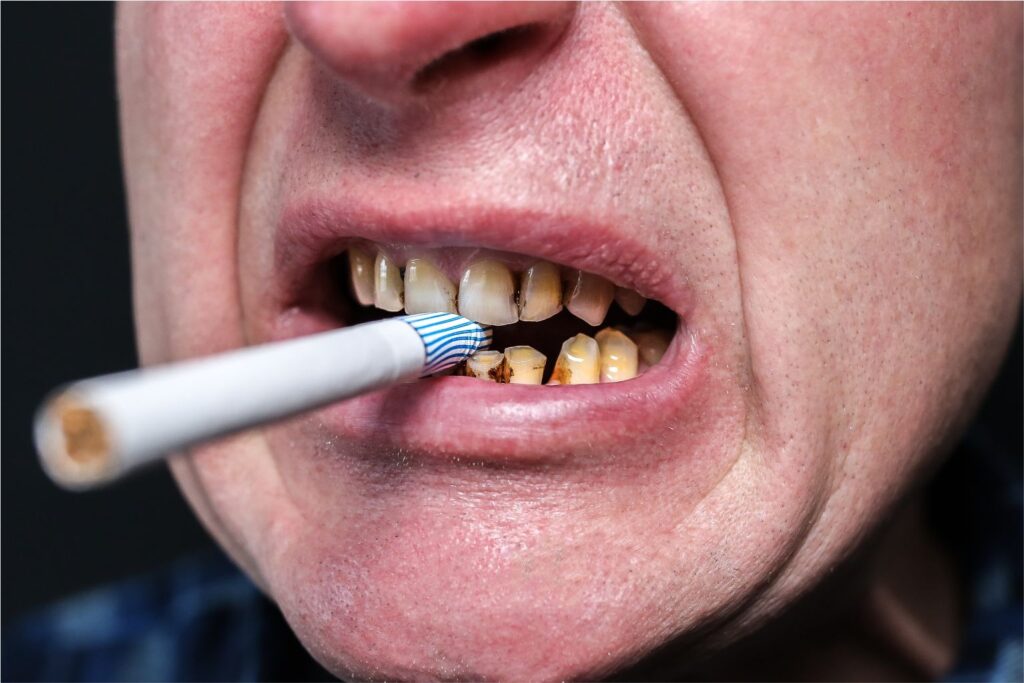
A new research shows that smoking leaves permanent marks on teeth and changes that can be detected long after someone quits the habit.
Scientists from Northumbria University, UK, have traced damage from smoking in the tooth’s cementum. Cementum is a rigid tissue that forms rings, similar to the tree rings, as a person ages.
Also Read | Women twice as likely as men to develop serious lung issues without smoking
The study, published in PLOS One, analysed 88 teeth. Seventy of these were from recent dental extractions and 18 from archaeological remains. Researchers discovered that 70% of ex-smokers and 33% of current smokers showed clear signs of smoking-related disruptions in these cementum rings, compared to only 3% of non-smokers.
“Our research shows that it’s possible to tell if someone was a smoker just by examining their teeth,” said Dr Edward Schwalbe, associate professor at Northumbria University. “We found that the regular annual growth of cementum rings was often disrupted in smokers, both past and present, while it remained intact in most non-smokers.”
Researchers also found that ex-smokers often had thicker cementum, possibly indicating the body’s effort to repair and promote healthy tissue growth after quitting smoking.
The team also studied archaeological teeth dating from 1776 to 1890 that displayed similar disruptions and even pipe-smoking stains, offering a glimpse into tobacco habits in those years.
“This technique could one day aid in both forensic cases and archaeological research,” Schwalbe added, “revealing not just someone’s age, but lifestyle factors like smoking that leave a permanent trace on their teeth.”








